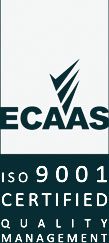Mention the Public Health Unit’s Immunisation Coordinator Marianne Trent to any local health professional and they describe her as ‘a legend’ and a fantastic resource for information about immunisation.
Marianne finishes work in April and HealthSpeak sat down with her to talk about her career and the changes she’s witnessed in the vaccination landscape.
There’s no doubt she’ll be missed – she has the benefit of 27 years’ experience in the field of Immunisation and Public Health.
In 1992 when Marianne took on the role of AIDS Coordinator, TB Coordinator and Immunisation Coordinator for the new Public Health Unit, she recalls the Immunisation Schedule as being ‘very simple’.
“We were still using the whole cell pertussis vaccines which meant we were getting side effects that we just don’t see in the vaccines now.
“And when I first started in Public Health we were seeing hundreds of cases of measles up here. In 1998 we ran a campaign where we offered measles vaccination to every child in primary school.
“Until that time we constantly had cases of measles and we did have deaths.”
Before those local measles deaths, the first time Marianne witnessed children dying was as a volunteer in Vanuatu in the 1970s.
“They were dying from whooping cough and measles, something I’d never seen happen in New Zealand.”
In fact Marianne used her Vanuatu experience to effectively counter an anti-vaccination article in The Echo written by Meryl Dorey of the Australian Vaccination Risks Network, previously known as the Vaccination Awareness Network or VAN.
“Dorey was claiming that if people just ate a proper diet and took exercise and vitamins then they wouldn’t die from measles.
“And my reply was that when I worked in Vanuatu in the ‘70s those kids had a perfect diet, they weren’t overweight, they never sat inside looking at a TV – they were outside playing. But they got measles in the morning and they were dead in the afternoon.”
Marianne said dealing with the anti-vaccination movement had been a really interesting part of her job.
“When I first started there was no anti-vaccination sentiment around. People just vaccinated their kids. It was in the mid ‘90s that we starting seeing this opposition to vaccination on the North Coast, and in particular from VAN as they were in those days.”
Marianne said it was difficult to get the facts on immunisation across in the ‘90s as any media release put out by the Public Health Unit would see the reporter go to VAN for their opinion.
“Nobody was taking on the misinformation peddled by VAN until a man named Ken McLeod from the South Coast put in a 90-page complaint to the Health Care Complaints Commission. It was after that that people actually took them on. And it wasn’t until after McLeod’s complaint that the media stopped using VAN as spokespeople on the topic.”
There are two facets to her work that have given Marianne the greatest enjoyment and satisfaction – teaching vaccine providers and working with them; and talking to mothers who are unsure about vaccinating.
“If a mother would ring me up then they had an open mind. And the ones with a closed mind would never ring me. I would say 90 per cent of mothers who rang me would go on to either vaccinate fully or at least partially. They just needed someone to have the time to talk to them about it. And in some instances that took three meetings with them to actually get them convinced that vaccine was the way to go.”
She knows she was lucky to have the time to really engage with these uncertain mothers, as nurses and doctors don’t have the time.
Marianne recalls some very persuasive arguments she used.
“I used to explain to mothers that when I first started working as a nurse we used vaccinations like smallpox, diphtheria, tetanus and whopping cough. And we used over 2000 antigens or proteins to protect against five diseases.
“I’d tell them that we now use less than 200 to protect against twice as many diseases. So vaccines have now been made smarter and that’s a really convincing argument for some parents.”
The other useful argument is pointing out just how small the risk of vaccination side effects is. Modelling shows that the whole of the immunisation program uses up something like 0.01% of the available immune system.
“That’s a tiny part compared to the rest of the world that the body has to become immune to,” said Marianne. “You are looking at something very small and very controlled.”
Since she began in 1992, Marianne has also seen a lot of good news stories. These include real success with Aboriginal immunisation, which is now beyond 95%, the Gardasil 9 HPV vaccine and the meningitis and rotavirus vaccines.
But the really good news is that Marianne believes on the North Coast we are coming out of a phase of not vaccinating.
“The reason I think this is that so many teenagers are getting vaccinated now who weren’t getting vaccinated as a child, and those teenagers when they have kids will vaccinate their kids. Because most of them are very angry about not being vaccinated.
“So I think within another generation we are going to have immunisation rates the same as everywhere else in Australia.”
Until a new Immunisation Coordinator is appointed, Marianne’s colleague, Immunisation Officer Rachelle Deaker will be in the office on Wednesdays and is happy to field queries on (02) 66 207 514.



